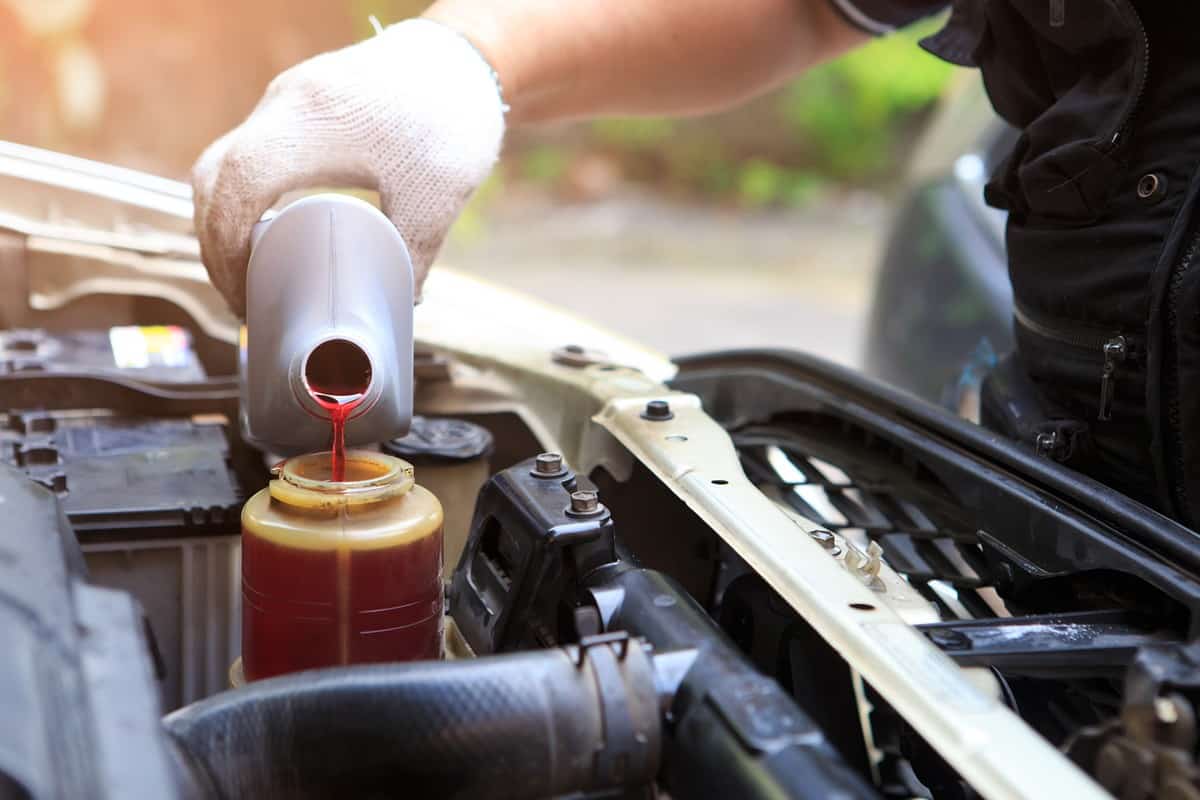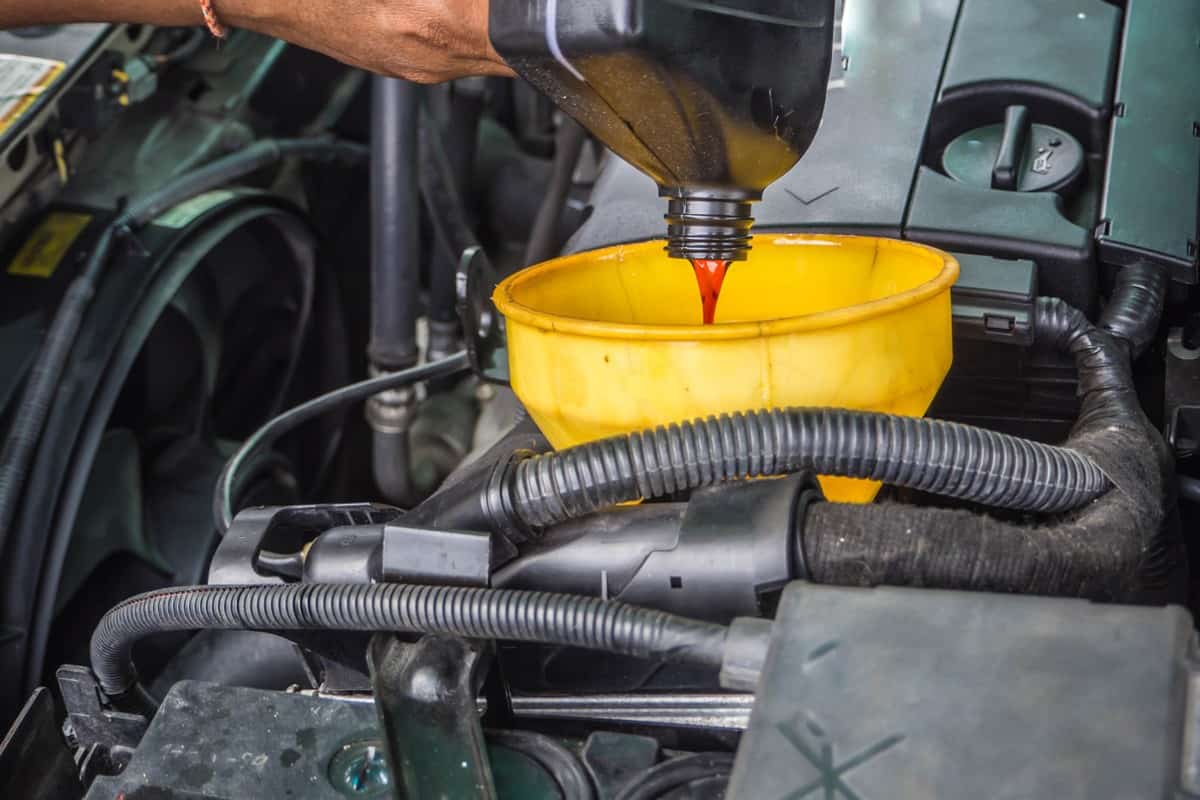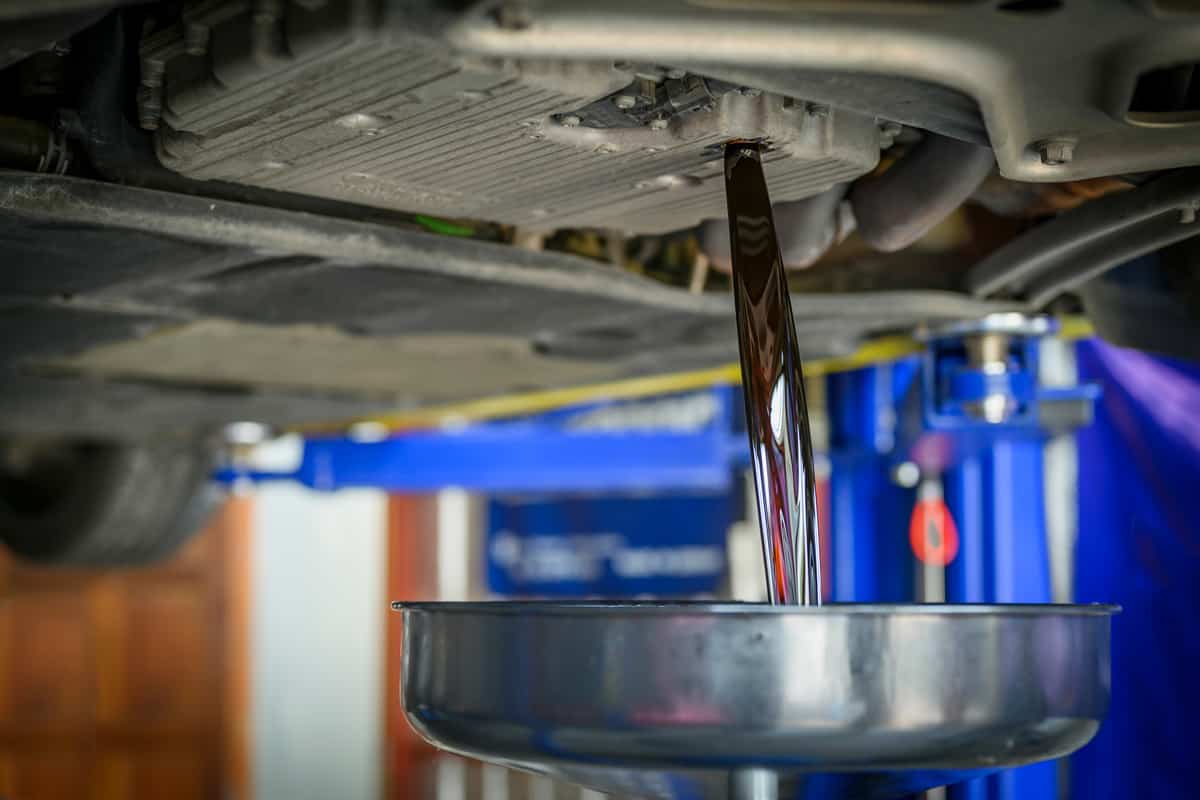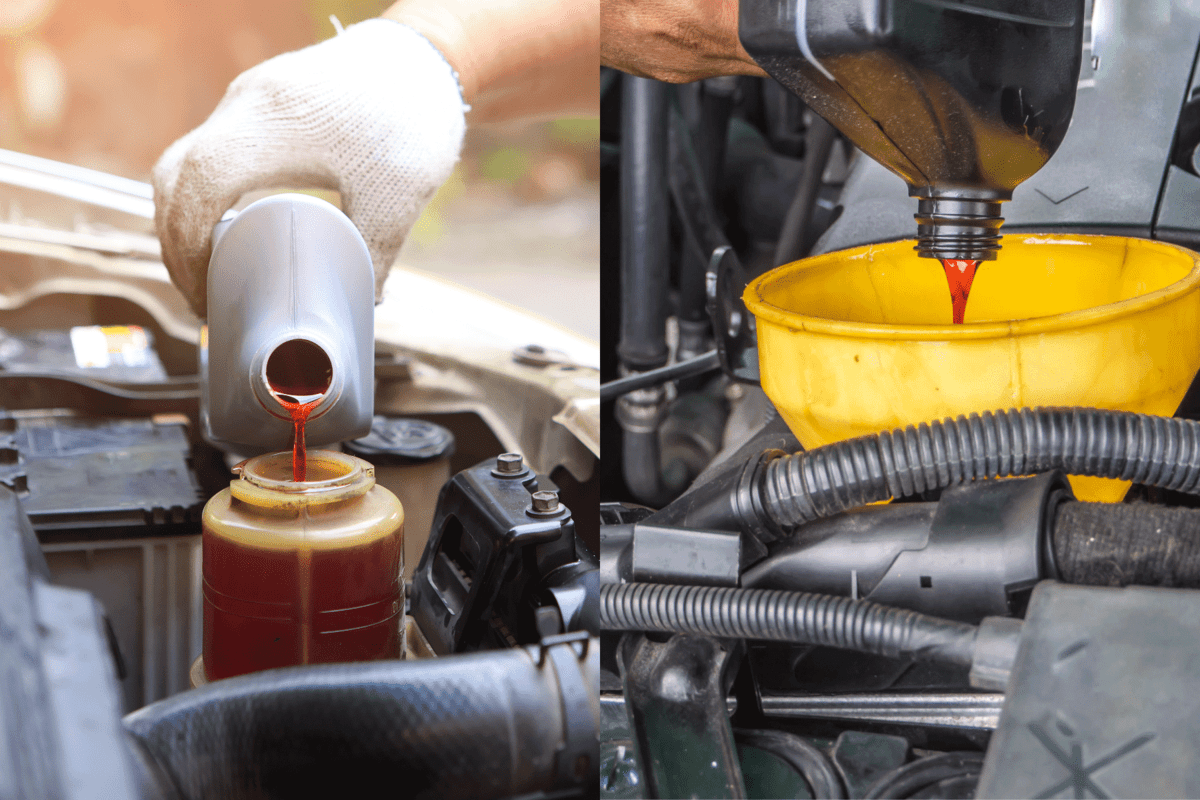Transmission fluid plays an important role in your car's operation. With that said, does it matter what transmission brand you use? Better yet, can you mix different brands of transmission fluids together? Let's take a closer look.
Each vehicle has specific transmission fluid requirements, so you should not mix transmission fluids. The type of transmission fluid specified by your car's manufacturer is based on a number of factors, including the transmission itself, operating temperatures, and service life expectancy. If you are unsure of what type of transmission fluid to use, check your car's owner's manual or ask a professional.
With any fluid, it's important to know what your car's manufacturer recommends. In this article, we will discuss why it's vital to only use the recommended transmission fluid for your car. In addition, we will answer other frequently asked questions about transmission fluid, so read on!

Can You Mix Different Brands Of Transmission Fluid?
The transmission is a system of gears that helps transfer power from the engine to the wheels. This system relies on transmission fluid to function properly.
Transmission fluid has many purposes, including:
- Lubricating the transmission
- Cooling the transmission/dissipating heat
- Cleaning the transmission
- Sealing the transmission
There are different types of transmission fluid, and each type has its own set of benefits. The type of transmission fluid specified by your car's manufacturer is based on a number of factors, including the transmission itself, operating temperatures, and service life expectancy.
With that said, your owner's manual or a professional should be able to help you determine what type of transmission fluid is best for your car.

In general, it's not recommended to mix different brands of transmission fluid. Different brands of transmission fluid can have different properties, and mixing them could result in poor performance or damage to your transmission.
If you must add fluid to your transmission, be sure to use the same type of fluid that is already in the system.
Like adding oil, adding transmission fluid doesn't substitute for a transmission flush. A transmission flush is a procedure in which all of the old fluid is flushed from the system and new fluid is added. This should be done every 30,000-100,000 miles depending on your car manufacturer's recommendations.
A transmission flush is a more thorough way of changing your transmission fluid, and it will help keep your transmission running smoothly for many miles to come.

How Do I Know When My Transmission Fluid Needs To Be Changed?
If you are unsure of when to change your transmission fluid, check your owner's manual. Most carmakers recommend that transmission fluid be changed every 30,000-60,000 miles. However, this recommendation may vary depending on your vehicle and driving habits.
There are a few telltale signs that your transmission fluid needs to be changed. These include:
Trouble Going Into Gear
If your vehicle is having a tough time switching gears, it may be low on transmission fluid. When transmission fluid gets low, it can cause the gears to slip and make it difficult for your car to change gears properly.
Transmission Fluid Leaks
If you notice a red, pink, or brownish liquid leaking from your car, it could be transmission fluid. Transmission fluid leaks are one of the most common reasons why transmission fluid needs to be changed.
Delay In Acceleration
If it seems like your car is taking longer to accelerate than usual, it may be due to a transmission fluid issue. When transmission fluid gets low, it can cause your car to lose power and take longer to accelerate.
Shuddering Or Jerking
If you feel your car shuddering or jerking when you are driving, it could be a sign that your transmission fluid needs to be changed. This is because low transmission fluid can cause the gears to slip, which can lead to a jerky or irregular driving experience.
Weird Noises
If you hear weird noises such as whining or grinding coming from your car, it could be an indication that your transmission fluid needs to be changed. These noises are caused by the gears not being properly lubricated, which can happen when transmission fluid gets low.
Transmission Fluid Is Black Or Brown
Black or brown transmission fluid is a sign that the fluid is old and dirty. This can happen over time, and once oxidation occurs, it can lead to sludge and debris buildup.
Healthy transmission fluid will be red and transparent. If you notice that your transmission fluid is dark, it's a good idea to have it changed.
If you notice any of these signs, it's a good idea to have your transmission fluid checked as soon as possible. A qualified mechanic or transmission specialist will be able to tell you for sure whether or not your transmission fluid needs to be changed.

Do You Change Transmission Fluid When It's Hot Or Cold?
If you plan on changing your transmission fluid yourself, it's important to know that the process is different depending on whether your transmission is hot or cold.
The answer is to change the transmission fluid when the vehicle is at normal operating temperatures. Once you have your vehicle raised, let the vehicle idle in park for a few minutes to allow the transmission fluid to reach normal operating temperature.
This will make it easier to drain the old transmission fluid, and it will also help ensure that all of the old fluid is drained from the system.
Then turn your vehicle off and remove the drain plug from the bottom of the transmission pan. Allow all of the old fluid to drain out into a catch pan. Once all of the fluid has drained, replace the drain plug and add new transmission fluid to the system.
How Much Does A Transmission Fluid Flush Cost?
Depending on the make and model of your vehicle, a transmission fluid flush can cost $100-$400. The price will also vary depending on the type of transmission fluid that you use.
Synthetic transmission fluid is typically more expensive than conventional transmission fluid, but it can provide better protection for your transmission. If you are unsure of what type of transmission fluid to use, consult your owner's manual or ask a qualified mechanic.
A transmission fluid flush is a good way to keep your transmission healthy and extend its lifespan. If you just bought the vehicle and aren't sure if the previous owner had the transmission flushed, it's a good idea to have it done as soon as possible.
If you notice any of the signs that your transmission fluid needs to be changed, don't delay in getting it done. Transmission problems can be expensive to fix, so it's best to catch them early.

What's The Difference Between A Transmission Flush And A Fluid Change?
The main difference between a transmission flush and a change is that a flush entails completely replacing all of the fluid in the system, while a change only replaces some of the fluid.
A transmission flush will remove all of the old fluid from the system as well as any debris or contaminants that may be present. This helps to ensure that your transmission is getting the cleanest possible fluid.
A transmission fluid change will drain some of the old fluid from the system, but there will still be some old fluid left behind. This can lead to contamination and decreased performance over time.
Another key difference is how long each procedure takes. A transmission change can be done in 30 minutes by a qualified mechanic. A transmission flush, on the other hand, can take two to four hours to complete.
If you're unsure of which procedure to choose, it's always best to consult with a qualified mechanic or transmission specialist. They will be able to inspect your transmission and make a recommendation based on its condition.
Can You Do A Transmission Fluid Flush Yourself?
If you have the right equipment and the know-how, you can do a transmission fluid flush yourself. However, it's important to note that this is a complicated procedure and should only be attempted by someone with experience working on transmissions.
If you don't feel confident in your ability to do a transmission fluid flush yourself, it's always best to leave it to the professionals. While it will cost you more money upfront, it will save you money in the long run by preventing costly transmission repairs.
Final Thoughts

By using the right transmission fluid and having it changed or flushed according to the manufacturer's recommendations, you can help keep your transmission in good condition and extend its lifespan. If you notice any signs that your transmission fluid needs to be changed, don't delay in getting it done.
Made it to the end? Here are other articles you might find helpful:
Transmission Slips When First Starting [Cold Conditions]
